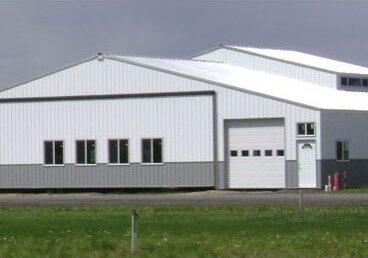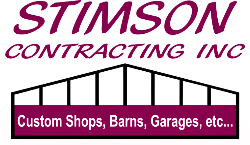
Tips for Constructing a Durable Warehouse
When you’re building a warehouse, especially here in the Spokane area, durability isn’t optional—it’s essential. Whether you’re storing inventory, operating machinery, or running a distribution center, your warehouse has to stand up to years of use, environmental exposure, and evolving business needs.
At Stimson Contracting, we’ve built a wide range of commercial and industrial structures across Eastern Washington, and I can tell you this: the difference between a basic building and a truly long-lasting warehouse is in the planning, materials, and construction details. In this article, I’ll walk you through our top tips for building a warehouse that’s tough, efficient, and built to last.
Table of Contents
1. Start with the Right Site and Orientation
A great warehouse starts with a great site. That means choosing a location with:
Adequate drainage
Space for parking, deliveries, and expansion
Good access to roads or transportation routes
A flat, stable building pad
It’s also important to orient the building for optimal sunlight, wind protection, and accessibility. A little planning here can save you thousands down the road.
2. Choose a Strong, Scalable Structural System
We typically recommend post-frame construction for mid-size commercial warehouses in Spokane. It’s faster to build, scalable, and extremely strong when properly engineered.
Steel and hybrid builds are also options depending on the warehouse’s size and load demands. We’ll help you choose the right system based on your usage, budget, and long-term plans.
3. Plan for Future Expansion
It’s smart to build with the future in mind. Even if you don’t need the space now, we can:
Install footings or headers for future doors
Design the roofline to accommodate future add-ons
Leave space on your lot for growth
Planning ahead avoids costly modifications later.
4. Use High-Quality, Low-Maintenance Materials
A durable warehouse uses materials that can withstand wear, weather, and time. That includes:
Heavy-duty metal siding and roofing
Treated lumber or engineered posts
Industrial-grade doors and hardware
Long-lasting fasteners and flashing
Cheaper materials may save upfront but lead to higher maintenance and shorter lifespan.
5. Reinforce for Spokane’s Climate
Spokane experiences snow, wind, and wide temperature swings, which means your warehouse needs to be:
Engineered for local snow and wind loads
Properly sealed to handle freeze/thaw cycles
Built with materials that can expand and contract safely
We work closely with engineers and permitting agencies to ensure every structure exceeds local code requirements.
6. Design for Efficient Traffic Flow and Access
How people and equipment move in and out of your warehouse matters. We help you plan:
Door placement for trucks and forklifts
Entry points for personnel
Drive lanes, turnarounds, and delivery zones
Safety features like bollards and lighting
A smart layout improves safety and boosts productivity.
7. Include Proper Ventilation and Insulation
Too many warehouse builders skip this step—and regret it later. A durable warehouse should be comfortable and energy-efficient, with:
Ridge vents or powered exhaust
Insulated roof and walls
Moisture barriers to prevent condensation
Options for HVAC if temperature control is needed
Good airflow keeps your building dry, comfortable, and corrosion-free.
8. Don’t Skimp on the Slab and Foundation
The foundation is what everything else relies on. We recommend:
4"–6" thick concrete slabs for light use
Reinforced slabs for heavy equipment or racking
Vapor barriers under slabs
Perimeter thickened edges if needed for walls or equipment
You don’t want cracks or uneven floors a few years down the road.
9. Stay Code-Compliant from the Start
Spokane County has clear codes for:
Snow load
Wind shear
Seismic zones
ADA access
Commercial permitting
We handle all engineering and permitting so your warehouse is 100% compliant—and ready to pass inspections the first time.
10. Conclusion: Build It Once, Build It Right
A warehouse is a long-term investment. Whether you’re storing equipment, managing inventory, or launching a business, your building should be ready for anything—and built to last.
At Stimson Contracting, we specialize in durable, code-compliant warehouse buildings tailored to Spokane’s climate and your specific needs. From design to site prep to final walkthrough, we make sure your warehouse is done right the first time.
📞 Call today to schedule a free site consultation 509.244.2636
🌐 Visit our website for Spokane-specific building tips
📧 Request a custom quote and timeline
Read our other articles:
- Home Page
Barndominiums in Spokane: Trendy, Durable, and Affordable
10 Reasons Pole Buildings Are the Future of Rural Construction
How to Choose the Right Pole Barn Contractor
Top Pole Barn Design Ideas for 2025
How to Plan Your Dream Shop Construction Project
What You Need to Know Before Building a Pole Barn in Spokane
The Pros and Cons of Living in a Barndominium
Spokane Shop Construction: Local Regulations to Know
Custom Pole Buildings: Options That Add Value
From Barn to Barndo: The Transformation Process
Spokane’s Growing Demand for Custom Commercial Buildings
Common Mistakes to Avoid with Pole Building Projects
Is a Pole Building Right for Your Small Business?
Why Pole Barns Are Ideal for Rural Spokane Properties
Can a Pole Barn Increase Your Property Value in Spokane?
Multi-Use Shop Buildings: Storage, Work, and More
7 Creative Uses for Pole Barns in Spokane
Exploring the Cost Per Square Foot of Pole Barns
10 Barndominium Myths Debunked
Building a Shop on a Budget Without Cutting Corners
Navigating Commercial Building Codes in Spokane
Turning a Pole Barn into a Livable Space
The Complete Guide to Pole Building Construction in Spokane
What Is a Barndominium and Why Should You Build One?
Shop Construction Mistakes to Avoid
Cost Breakdown: Building a Barndominium in 2025
Post-Frame vs. Pole Barn: What’s the Difference?
Spokane Area Shop Construction: Timeline Expectations
What Makes a Barndominium So Cost-Effective?
Top 5 Mistakes to Avoid When Building a Pole Barn
Tips for Constructing a Durable Warehouse
How to Insulate Your Pole Barn for All-Season Use
Is a Barndominium Right for Your Family?
How Long Do Pole Buildings Last? Lifespan and Maintenance
How to Make Your Shop Energy Efficient
Upgrading Your Existing Pole Building
Barndominium Floor Plans That Maximize Space and Style
Adding Insulation to Pole Buildings: Pros and Cons
Durable Flooring Options for Shop Spaces
How to Prepare Your Spokane Property for Pole Barn Construction
The Evolution of Pole Barn Design: Modern Features to Consider
How to Design a Multi-Use Pole Barn That Works for You
Luxury Barndominiums: Yes, It’s a Thing
How to Prepare a Commercial Lot for Building
Must-Have Add-Ons for Your Pole Barn Project
Barndo vs Tiny Home: Which One Fits Your Lifestyle?
Modern Office Construction: Open Space vs. Private
How to Select the Right Commercial Builder
Building a Custom Barndominium: What to Expect
Energy-Efficient Pole Buildings: Is It Possible?
Storage Solutions Inside Your Workshop
Tips for Adding Electrical and Plumbing to Your Shop
How to Incorporate Rustic Charm into Your Barndo
Mixed-Use Commercial Buildings: What to Know
How Weather Affects Pole Barn Construction in the Northwest
How to Add a Workshop to Your Barndominium
Spokane Zoning Regulations for Barndominiums
Spokane Businesses Love These Commercial Floor Plans
Shop Buildings for Hobbyists: What to Include
Spokane Horse Barn Builders
Spokane Indoor Arena Builders
Spokane Agricultural Farm Buildings
Spokane Airplane Hangar Builders
Spokane Commercial Building Builder
Pole Building Contractors in Airway Heights, WA
Pole Building Contractors in Medical Lake, WA
